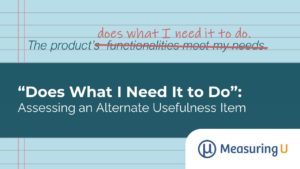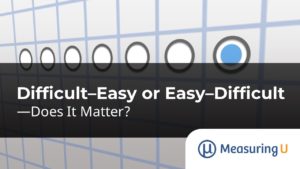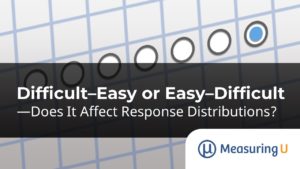 You’ve got a few minutes between errands and need to run into the store.
You’ve got a few minutes between errands and need to run into the store.
You efficiently run to the right aisles dodging shopping carts and get the two items you need and dash to the checkout only to be frustrated with how long it’s taking to pay.
You leave the store empty handed.
The same type of thinking (and metaphor) is used to justify investment in making online checkouts easier and faster. And for good reason, if people encounter problems in the checkout, there’s a clear link to conversion rates.
But now imagine a different scenario.
With those spare minutes you run to the store and spend all your time browsing up and down the aisles and can’t find what you’re looking for. You look in every conceivable place. You’re sure they had the items you needed but can’t find them and leave frustrated.
The same thing happens online, in seconds, rather than minutes. Navigation and labels on websites are poor leading to too many clicks and backtracking. The user, frustrated by the lack of clear navigation, leaves your site.
If users can’t find what they are looking for online and offline, the best checkout process won’t matter. And if users don’t return to your website in the future, the cost of poor findability is indeed high.
Here are five points backed by research to emphasize the importance of measuring and improving website findability.
1. People Spend More Time Browsing Than Buying
Online consumers spend more time researching than actually making a purchase. While we want to decrease checkout friction, there’s good evidence that the decision to buy is made much earlier than checkout.
For example, we found from our analysis of 10 retail websites that at any given time, 68% of users are browsing and only 16% are actually making a purchase. That is, users on retail websites are 4 times more likely to be browsing than buying (even during the busy holiday shopping season).
2. People Tend To Browse First
Despite advances in search technology, there’s good evidence that people browse before using the search function on a site. In research we conducted, we found that on average only about 14% of users started with a search. There is a fair amount of variability in the data; search by task ranges from a low of 2% and a high of 75%. This was similar to earlier research:
- Gerry McGovern also found more users initial reaction is to browse.
- Another study found about a 5% search rate.
- In 2003, Katz and Byrne[pdf], in a more rigorous examination, found that participants search less than 10% of the time, but search almost 40% of the time when faced with “narrow, low-scent menus.”
- A more recent study by KoMarketing [pdf] found that after reaching a company’s website via a referral site, 50% of visitors use the navigation menu to orient themselves.
.
Across these studies are some trends. The context and the type of task affect how much people search. The type of task (looking for something specific versus general) and the website (for example ecommerce versus travel) affect how much users take a browse first strategy. What’s clear though is that users do rely heavily on browsing on websites despite the prominence of search features.
3. Poor navigation discourages Purchasing
iPerceptions reported that more than half of consumers who are ready to make a purchase on a website are unable to. One of the main reasons, cited by 34%, is they couldn’t find the product they’re looking for.
This is similar to earlier research that found that the main reason people can’t find what they’re looking for is because of poor usability and navigation.
And 25% of respondents reported a too complicated website navigation as the reason for abandoning shopping carts.
4. Website Findability Is Linked to Company Revenue
There have been a few attempts to link poor findability to sales and these studies date back to the early days of ecommerce. An early study found that navigation features that reduce the time to purchase products online account for 61% of the variance in online monthly sales.
Around the same time, a Forrester study found that about half of lost sales are due to users not finding products, which in turn leads to a major reduction in repeat visits.
A 2015 study by Danish researchers[pdf] actually found that content on websites that supports browsing products and services in the pre-purchase stage ultimately explained more of a company’s financial success than transactions (ordering and paying). This is an interesting finding and more research is needed to replicate the findings. The major shortcoming of this study is that it used reported success measures from survey respondents as opposed to actual success measures (e.g. recording or observing success on websites and comparing that to customer satisfaction and then tying that to financial company performance).
5. Better Navigation Increases Average Order Value
A recent large study that examined thousands of website transactions found that better website navigation increases the average order value on “utilitarian” products across websites. An interesting caveat to this finding is that website navigation didn’t help the average order value of more hedonic products (like jewelry).
The next time you’re looking into improving the conversion rate of your website consider more than just the users who abandoned during checkout. Be sure you’re looking at the much larger percent who couldn’t find what they were looking for.


